The late Composer/Trumpeter Jon Hassell proposes that Western music (and culture), must simultaneously look forward with technology and innovative forms, while cultivating a relationship to the rich multiplicity of the Earth’s tribal musics. This is a founding principle in the ongoing movement called Geo-Fauvism, or Art of/for the Wild.
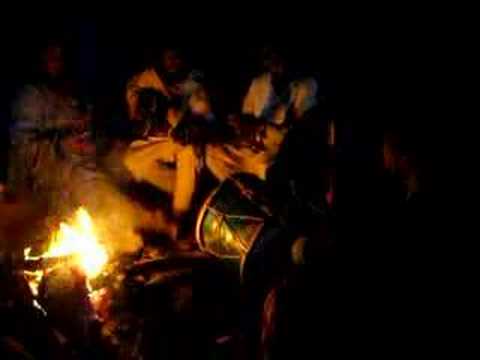
Watch this video on YouTube
Touareg nomads playing traditional music
Artificial Boundaries, Expanding Horizons, Possible Musics
By Jon Hassell, Published in Heavy Metal
From an October 29, 1981 New York Times background story on Chad/Sudan/Libya:
“Geneina lies on the indistinct border between the Sudan and Chad. This region is known as Darfur, and area the size of France which was once a proud, independent sultanate run by a dynasty of rulers that lasted five-hundred-and-sixty years. From Geneina, caravans of pilgrims overland to Mecca make their way east. Men of the Tuareg stock of desert nomads roam the areas, dressed in long white robes and white turbans. With their camels and mules and trappings they recognize no international boundary lines that appear on maps but not on the shifting sands and dry river beds they traverse…”
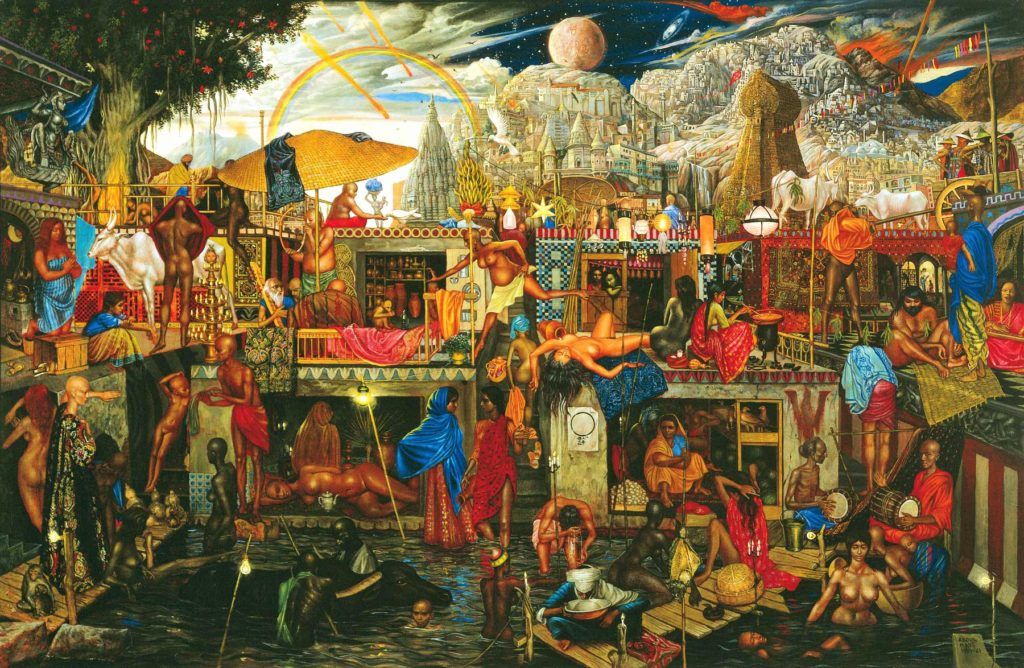

Life is increasingly filled with abstraction – things you can’t see or touch or taste but to which we collectively give the power to rule our lives. Lines that exist only on paper and in the mind; tick marks on the face of a watch which arbitrarily segment the steady, unbroken flow of time into separate units (who invented the second?); the technology of language, which by the very naming of an experience separates this act from the seamless landscape of inner life (and allows us to use the word “love” a million times without having to experience it once) are all abstractions which rule our lives.
Note this passage from anthropologist Edmund Carpenter‘s book Oh, What A Blow That Phantom Gave Me! (the phantom in this case being invisible electronic media which surround and swallow cultures):
“In preliterate societies the separation of spirit from flesh is thought to occur in the surrealist realm of dream, art, ritual, myth. Daily life, in the field or on the hunt, is intensely sensate, with all the senses alert and the spirit imprisoned in the body. We reverse this. Our electronic workaday would divorce images from physical reality. As counterpoint, we turn physical reality into pastimes: the hippie world of sensate experience serves to balance the non-sensory spirit world of electronic media. Like natives, the young enjoy the best of both worlds though it’s hard to know which one of these worlds to call ‘real.'”
A direct result of these workaday, electronic media technologies taking effect at the same time as the population explosion is the creation of a public climate where reputation looms larger than achievement, image is substituted for character, and the cardinal sin is to be unknown.
Carpenter continues: “News is what is reported; what isn’t reported isn’t news. Unreported events don’t cease to exist, of course; they simply fall into an area devoid of social and moral restraint.” In other words, what you don’t know about, you can’t be expected to respond to.
Let’s look at some unreported musical events (cultures) on this planet before they become surrounded and swallowed by contact with the self-conscious-making magic of recording and broadcasting technologies, and allow them to take their rightful place in the evolution of consciousness.
STORY: Geo-Fauvism and Anthropocene: Altered Planet, Wild Literature

Watch this video on YouTube
Music of Darfur
Overuse=Trivialization
An important lesson to learn when examining the music of many small tribal cultures is their embracing of music as a sacred gift, a “beyond words” way of expression that is reserved for use at the right time, to be perceived by ears and bodies fresh for the experience.
In Western technoculture, the use of totally abstract music à la Muzak as background for human events inevitably results in trivialization and a loss of the sense of specialness and meaning. Brian Eno’s creation of the genre “ambient music” formalizes this affectless situation as it exists. In effect, the concept of ambient music says, “If there’s such constant sound input that you can’t listen to it all, why not say it’s okay not to listen and here’s some music for listening or not.”
New Simplicity
The optimistic view might be that we’re going to reach such an overload level of symbol density that we’ll be forced to arrive at a new simplicity — an ability via artificial intelligence to combine many individual symbols operating in complex relationships into “chunks” of information which then can be treated as a single megaword.
The heading “new simplicity” is itself a simple example of chunking or a higher-level description of the detailed information in these paragraphs. Douglas Hofstadter, in his book Gödel, Escher, Bach, refers to this as “pruning the giant tree of possibilities.”
STORY: Karlheinz Stockhausen: Cosmic Pulses of Sound from the Dog Star

Watch this video on YouTube
Jon Hassell, Produced By Brian Eno – Ba-Benzélé from Fourth World Vol 1 – Possible Musics
Break-Up Points
Given the number of people expected on the planet by A.D. 2000, this notion of an overloaded symbol bank breaking up into chunks suggests a similar pattern for a high-density future population breaking up into clusters of New Tribal territories (a persistent visual theme of the fantasy illustrators found in this magazine). This doesn’t seem unlikely considering the present situation of tribes among tribes whose boundaries are no longer defined necessarily by geographical proximity or origin but are delineated by life-style and held together by a principally media-imparted sense of national unity.
Perhaps concepts such as “majority rule,” which came out of small-number experiences, also have break-up points in a mega-populated world. For example, if a hundred-and-one people of a tribe of two hundred vote for a particular course of action, this leaves only ninety-nine disgruntled people. But in a mega-tribe of two hundred million, this would translate to ninety-nine million who are forced to live under choices they don’t approve of. The equation changes when multiplied by such enormous factors.
This is a difference in scale which those excessively hypnotised by abstract thinking ignore. Instead they prefer to point out that “the percentage is the same.” To them “average” means that a man with one foot in ice and the other in boiling water can be said to be “comfortable.”
Perhaps, in some unforeseen way, the corporate musical imperialism which irons out regionalisms in its drive toward worldwide musical hits in Western pop style (Coca-Cola everywhere!) will also ultimately exceed public tolerance levels. Perhaps the result will be a return to a multiplicity of musics arising from tribes of likeminded people once again living within boundaries formed by hills and river beds (like the Tuareg nomads mentioned in the opening), linked worldwide by satellites.
This new respect for ancient ways facilitated by selective use of advanced technology must surely be one of the key ideas of our time, and will ultimately affect the way we think in the future.
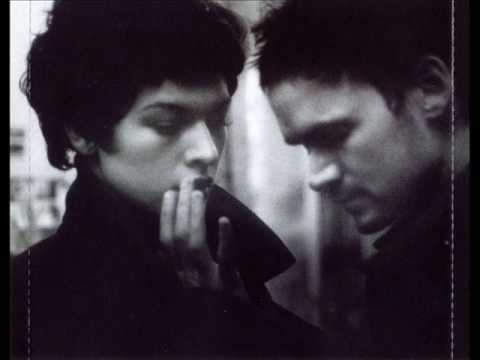
Watch this video on YouTube
Jon Hassell, Amsterdam Blue
Separating the Baby from the Bathwater
Just as many natural things may be separated by abstract boundaries, so other things may be joined artificially, by either habit or custom.
In Western culture, religion is naturally associated with sobriety and rigidity. Cultures where spirit life is joyful and sexual, or where leaders are expected to communicate the wisdom of grace and strength by dancing, are seldom taken seriously by Eurocentric minds, who, by media attitudes, are taught to observe this from a safe distance as a bizarre kind of Mondo Cane behaviour.
In the same way, classical or formal music in the West takes place in an atmosphere of reverence governed by rules of etiquette. In Euroculture, no form in which improvisation is a major element is considered “classical,” while in most other parts of the world the high musical experiences are always those in which some response to the feeling of the moment is included. Furthermore, Western thought habits dictate that anything that is overtly sensuous, with certain rhythmic inflections, is automatically perceived as belonging on a lower rung of the cultural ladder (jazz, rock, pop, and so on). Obviously what we have here is a kind of cultural racism that reduces non-European-derived art to “curio” status and thus neatly dismisses it from serious consideration in the same rank as our Western masters — all of whom, it may be pointed out, are white, born in the last three hundred years, and from cold climates.
The outlawing of certain attitudes in formal, structural music forces a strict dichotomy between what “high culture” salutes and what “high culture” likes to dance to. A sharp separation such as this couldn’t exist in small, integrated cultures where both young and old members of the tribe participate in common ceremonies and celebrations whose function is directly related to the major events of daily life and existence:
“Each member of the community knows perfectly…which variations he can execute. As great as the improvisation may seem, it is thus restricted to within this framework that is simultaneously metric, rhythmic, and melodic. This technique is the fruit of long apprenticeship… Just as every child learns to speak by hearing speech, so does the Pygmy child learn to sing by hearing singing, the boy with his father, the girl with her mother. Thus, the children progressively acquire the repertory of formulas that later, in their turn, they will use and pass on. This is the sole means, purely organic, of learning polyphony.” — Liner notes from Ocora LP 558526 discussing Central African Empire Pygmy music.
STORY: Brian Eno: A Visual Music of Ambient Melody
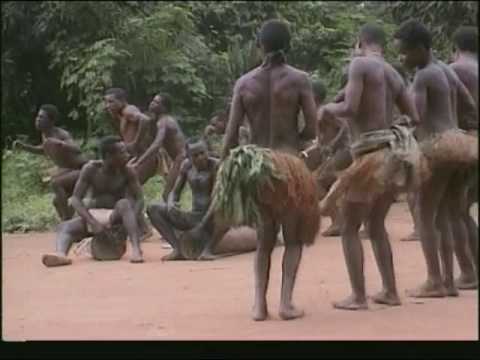
Watch this video on YouTube
The Polyphonic Singing of the Aka Pygmies of Central Africa
The Four “B”S: Beethoven, Brown, Ba – Benzélé
This revised list of “B”s illustrates a desirable balance between formality and vitality: faced with a choice of Brown (James) or Beethoven (Ludwig van) as my only records on a desert island, I’d say J.B. wins hands down. But the balance of structure with on-the-spot fun which is transmitted by the polyphonic after-the-hunt music of the Ba-Benzélé pygmies endures beyond both.
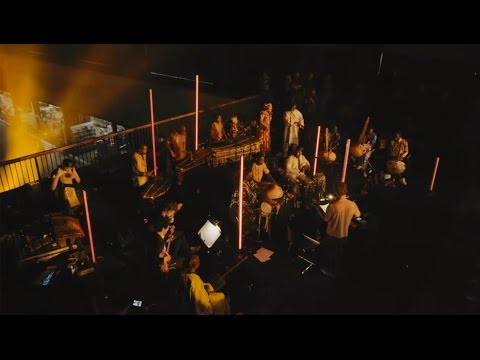
Watch this video on YouTube
Terry Riley’s In C Mali – Live at Tate Modern
The Same Yardstick
I have this make-believe idea: imagine a record store with bin dividers labeled “Newspapers” (good for a day or two’s listening), “Magazines” (keep it around for a week or a month), “Novels” (finds a semi-permanent place on your bookshelf), and “Reference” (source works to be consulted for a lifetime) – along with appropriate pricing related to disposability. Perhaps this method of classification would cause music writers and readers alike to think twice before devoting a lot of time to preparing or digesting lots of words about Newspaper-quality music written in serious art-criticism style, as if Elvis and Jackson Pollock were cultural equals.
Given the limited choice in Western music between energetic, trendy ephemera and dead high-culture masterworks, perhaps it’s not so strange that I notice a great many artists (or people in other disciplines) who in their own fields are quick to discern Newspaper-quality (derivative, one-trick) from Novel-quality (original, multi-leveled), yet remain remarkably fixed on the “Newspapers” and “Magazines” of music.
Perhaps this is the inevitable fallout of the Pop movement as summed up by the elevation of the Campbell’s soup can to iconic (worthy-of-serious-consideration) level — an individual’s okay art statement in its time, but hardly the stuff to build a culture on.
“A genuine culture,” wrote anthropologist Edward Sapir, “is the expression of a consistent attitude toward life, an attitude which sees the significance of any one element of civilization in its relation to all others. It is, ideally speaking, a culture in which nothing is spiritually meaningless.”
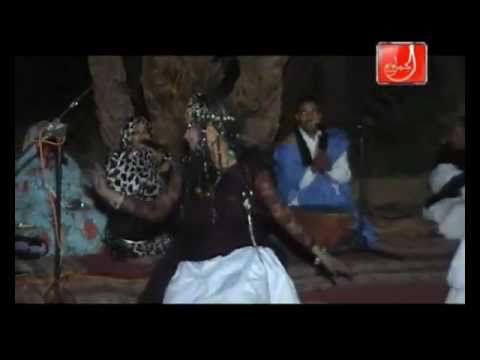
Watch this video on YouTube
El Guedra célébre danse sahraoui du sahara marocain (The Dance of the Cauldron/Cooking Pot, from the Moroccan Sahara)
Beyond Conditioning
To anyone who takes this seriously, it’s obvious that one must attempt to transcend the fixed game of technoculture, beyond passive consumption of media-ordained “right stuff,” just as one’s emotional growth can build on, or proceed from, the childhood “givens” via a wider knowledge of possible responses.
It’s a matter of degree: too much attention is paid by too many to too narrow an idea of what possible musics (or possible futures) there could be. And that’s because few people really have a comprehensive knowledge of what’s been happening on a global level all these years.
Virtually all the pop music in the West (excepting jazz, the first modern collision of tribal music with Euromusic) fits into the song-with-accompaniment form (chords and melody). When kid-with-guitar says, “I’m a musician now,” or a pop star is called a “composer,” some rudimentary ability in this simplest of forms is all that’s being talked about.
This is somewhat the same situation as having nearly all attention in visual art focused on the collage form, or the Polaroid, and reportage of work in other forms — sculpture, painting, and so on — relegated to the esoteric “specialist” magazines.
Brian Eno deserves the Trojan Horse Award for being the first to slip music of more unusual form (Discreet Music, Music For Airports) in front of a pop audience whose attention his song-with-accompaniment efforts had previously captured.
What’s Wrong With This Picture?
One has the tendency to imagine both the past and the future in terms of the present.
Just as a vision of the past should not be conjured up as if all events had taken place in the glow of the electric light bulb, a vision of the future, with people zipping around in anti-gravity devices listening to some hyper-song with hyper-guitar accompaniment is equally unimaginative. Are there going to be Republicans and Democrats forever?
Fourth World was supposed to signify… in those days, the Cold War days, there was the First World and basically the unspoken Second, which was the Soviet empire. Anything outside of those two was called Third World, and it usually meant less developed countries. And those less developed countries were places where tradition was still alive and spirituality was inherent in their musical output, for lack of a better term. (Fourth World) was like ‘3 +1’. The idea was the merging of the traditional and spiritual side from the Third World with the First World technology, using the harmonizer and that kind of thing. — Jon Hassell
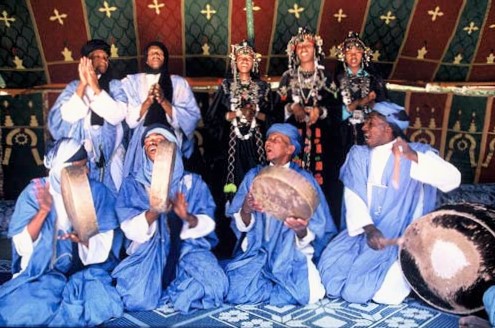

Overvaluation of Cold-Climate Thinking
Buckminster Fuller says that evolution is basically a matter of synthesis.
Although it may, at first, seem an oversimplification, try squinting your eyes to see the big picture without the confusion of detail: what’s happened is that cold-climate tribes had to develop technology in order to control a hostile environment, and now that very technology has developed in ways that enable them to impose their attitudes on warm-climate tribes (who have, quite naturally, evolved in other important but undervalued ways).
Now is the time for the technoworld to use its knowledge to go beyond this pattern — to begin to see the unforeseen ways in which the best of their attitudes will become ours, and ours become theirs, resulting in modalities which I refer to as Fourth World — a returning to, and a stepping forward at the same time.
It seems natural to me that a step into the future, will have some relationship to a deeper comprehension of the rich multiplicity of the earth’s tribal musics. Like a scientist who must isolate a single element from a compound in order to understand its nature and how it acts within a complex structure, we should make an effort to preserve the remaining “pure” traditions with the same concern shown toward the works of (e.g.) Michelangelo – with an ear towards understanding how these sounds make the day brighter and give courage before the hunt; to understand which music made sorrows bearable and expressed the mystery of creation before the entry date of the first transistor radio into the village.
Jon Hassell, U.S. trumpet player and composer, is known for his influence in the world music scene and pioneering of the Fourth World genre, a musical conception combining the philosophy and techniques of minimalism with Asian and African styles. His compositions feature a unique playing technique and unusual electronic manipulation of the trumpet sound. The article was presented on Brian Eno’s site: More Dark Than Shark.
Updated 3 January 2024

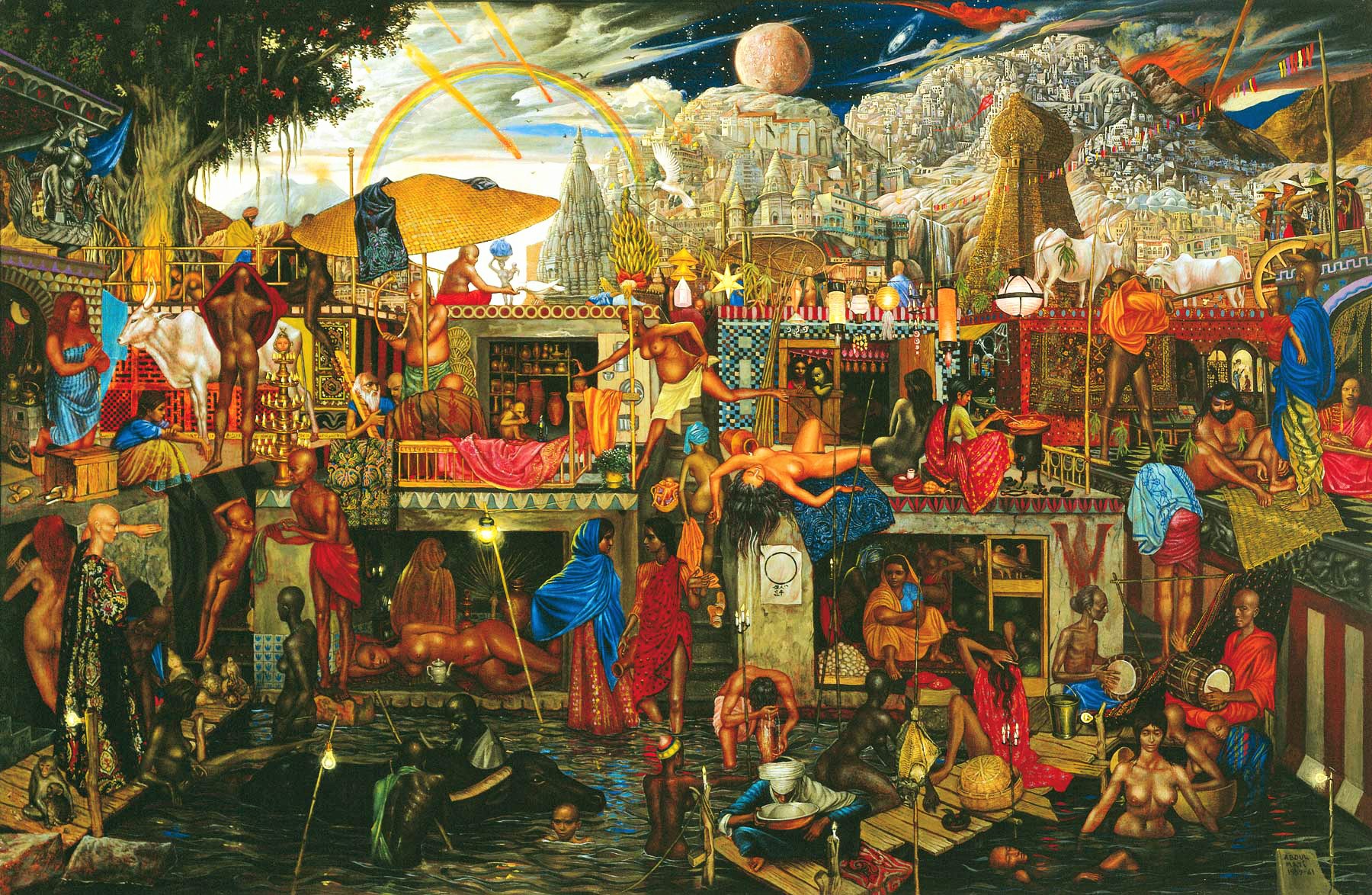








Pingback: Fela Kuti, Revolutionary Insurrectionist, Afrobeat Pioneer | WilderUtopia.com
Pingback: Pauline Oliveros and her Beautiful Canopies of Sound
Pingback: Geo-Fauvism: Waking to the Wild Earth Through Visual Art - WilderUtopia